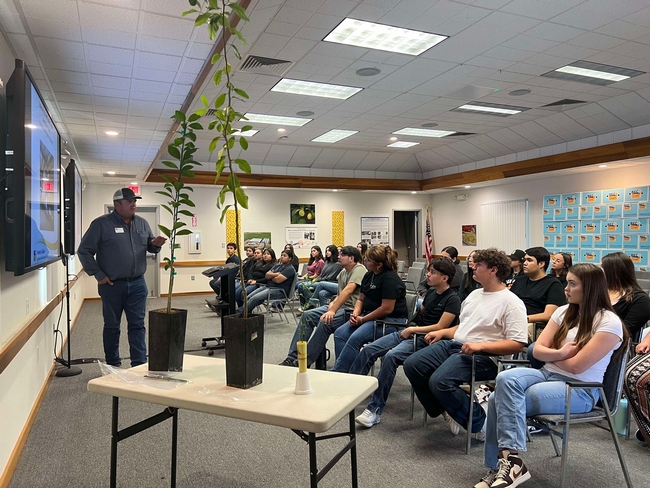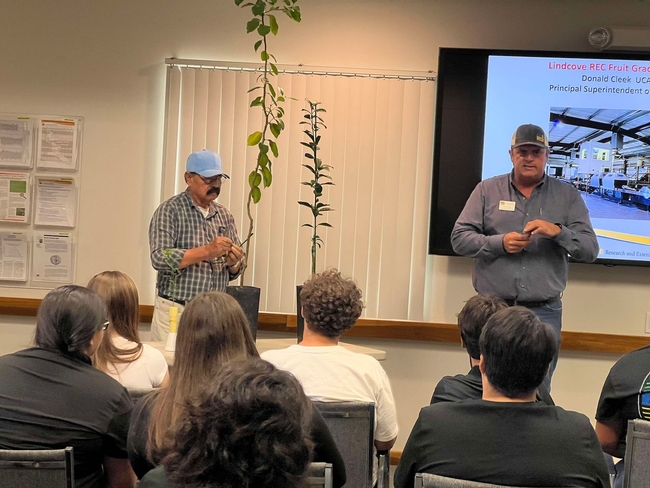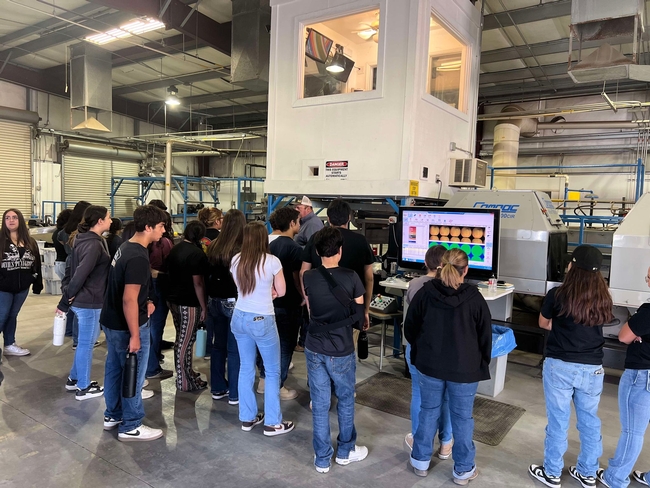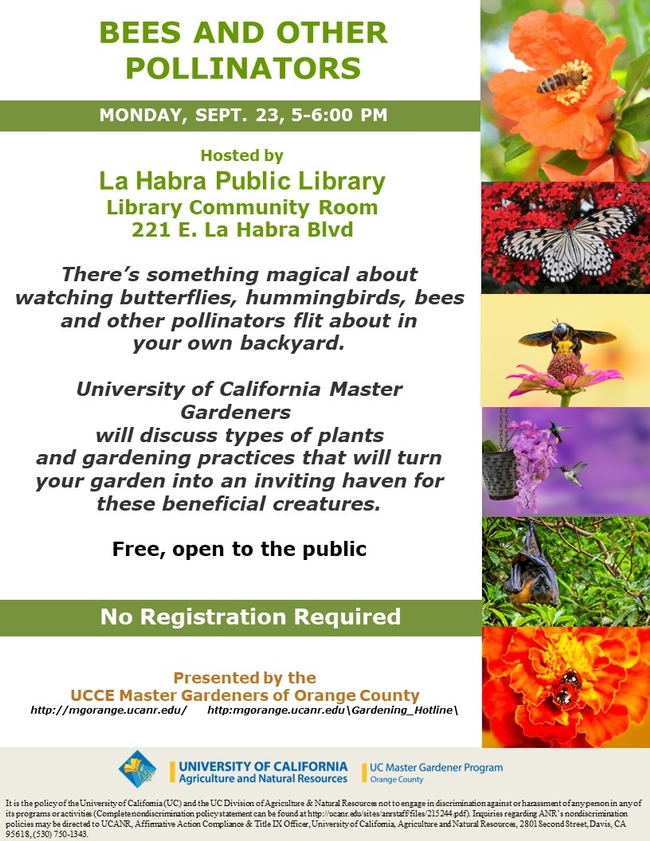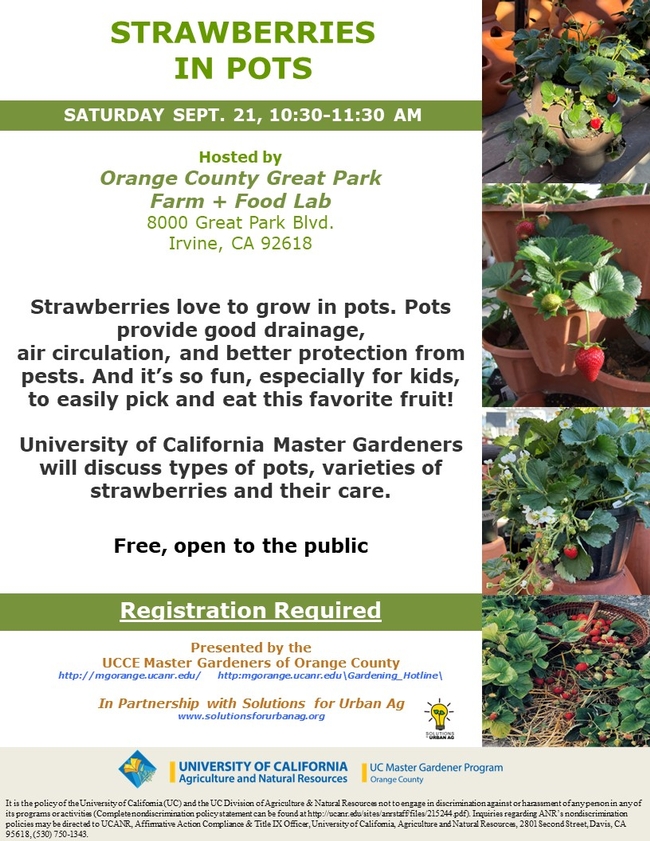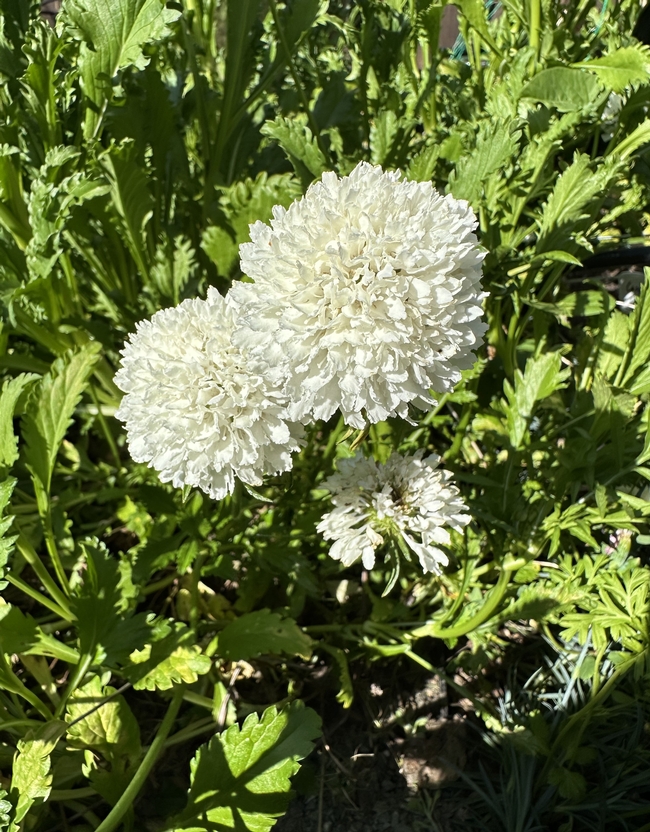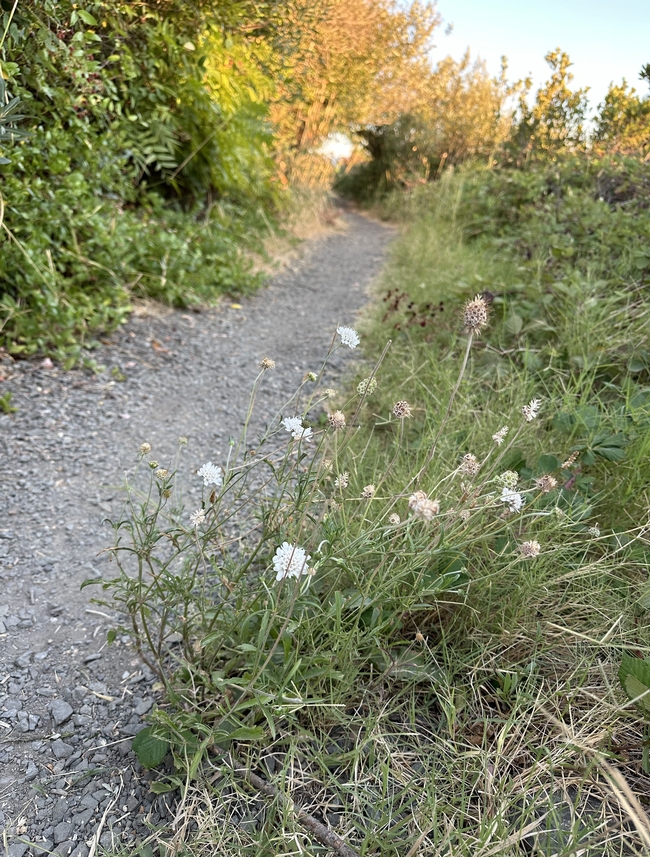- Author: Sandipa Gautam
Lindcove REC recently organized a “Citrus Workshop for Hanford FFA Students” reinforcing our dedication to Youth Outreach and Education to nurture the future generation of agriculturists. On September 18, 2024, Sophomore students from Hanford High School visited LREC. Throughout the day, they engaged in various activities aimed at connecting research to with practical solutions for growers. The event started with Dr. Ashraf El-Kereamy, Director of the LREC Center, who provided an overview of LREC's history and its continuing commitment to cooperative extension. Dr. Kereamy discussed different projects hosted at the LREC facility and the commitment of LREC to pioneering a tech-advanced future of farming. Dr. Sandipa Gautam, IPM Advisor shared research and extension program focused on integrated management of citrus pests important to California growers. The bud-grafting demonstration shown by Gerry was a highlight of the day. Donald Cleek, Superintendent at LREC gave students an overview of the packline and a tour where students learned about how fruit is sorted, graded, and packed. Students also visited CUPS facility, the first of its kind citrus growing under protective screen in California.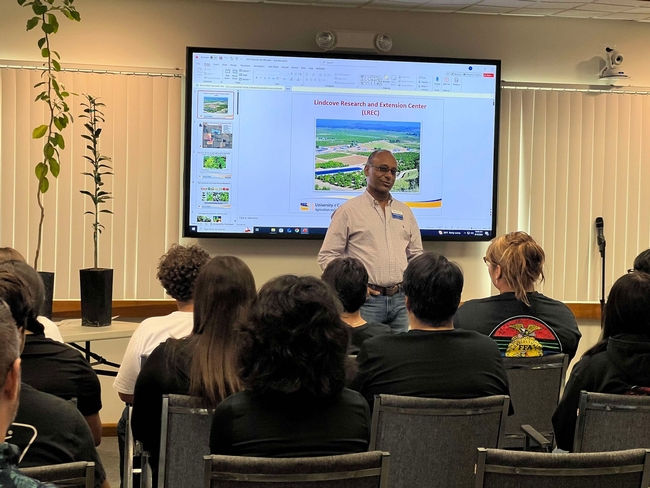
Ashraf El-Kereamy giving an overview of Lindcove REC.
Donald Cleek lecturing on LREC activities
Gerry demonstrating bud-grafting
After a lunch break, the class was guided through hands-on activities in the Entomology lab, where they evaluated an insect, citricola scale, under the dissecting scope. During the activity in the fruit quality lab students learned from Abigail Frolli about characters that determine fruit quality and the ways to evaluate quality. In the fruit physiology lab, students learned from Dr. Ashraf El-Kereamy and Tariq Pervaiz on evaluating effects of treatments of physiological parameters like photosynthesis.
Entomology Lab; hands on experience
Packline tour
- Author: Kathy Keatley Garvey
Wings up! Let's go!
The monarch fall migration is underway.
"Unlike most other insects in temperate climates, monarch butterflies cannot survive a long cold winter. Instead, they spend the winter in roosting spots," explains Monarch Watch. "Monarchs west of the Rocky Mountains travel to small groves of trees along the California coast. Those east of the Rocky Mountains fly farther south to the forests high in the mountains of Mexico. The monarch's migration is driven by seasonal changes. Daylength and temperature changes influence the movement of the monarch."
"In all the world, no butterflies migrate like the monarchs of North America. They travel much farther than all other tropical butterflies, up to three thousand miles. They are the only butterflies to make such a long, two-way migration every year. Amazingly, they fly in masses to the same winter roosts, often to the exact same trees. Their migration is more the type we expect from birds or whales. However, unlike birds and whales, individuals only make the round-trip once. It is their children's grandchildren that return south the following fall."
Have you seen any migratory monarchs? It's basically a "no" for our scientists at the Bohart Museum of Entomology , UC Davis.
- UC Davis distinguished professor emerita Lynn Kimsey, who directed the Bohart Museum for 34 years until she retired Feb.1: No.
- Bohart Museum associate and UC Davis School of Medicine employee Greg Kareofelas: No. "I still have not seen a monarch (but I have not been 'out and about' much this summer)
- Jeff Smith, curator of the Bohart Museum's Lepidoptera collection: Maybe. "I may have seen 1 monarch in my yard (Rocklin) yesterday (Sept. 16) as a fly-by."
It's not so rosy in the Pacific Northwest (PNW), according to Washington State University entomologist David James, who studies migratory monarchs.
On Aug. 31, he posted this on his Facebook page, "Monarchs in the Pacific Northwest": One month ago, things were looking very rosy in the PNW monarch world with an 82% increase in sightings during June and July compared to the same months in 2023. Sadly, things are now not so rosy if the number of reported sightings are a good barometer of what's happening out there (and they have been in the past few years). During August 2023 there were 172 confirmed monarch sightings in the PNW. This year there has only been 108 and most of these (80%) were in the first two weeks. The second half of August has seen very few monarchs reported in the PNW. I-Naturalist, the reporting site most used by monarch recorders, has had NO monarch sightings posted in OR, WA, ID or BC since August 12-16. This is concerning because the second half of August into September is when the third PNW-bred generation should be emerging and migrating. There is still time for sightings to pick up and hopefully they will. So please keep watching and reporting your sightings to I-Naturalist or Journey North."
One of his WSU-tagged monarchs (from citizen scientist Steve Johnson) fluttered into our garden on Sept. 6, 2016 from Ashland, Ore. (See Bug Squad)
Hoping to see another tagged monarch.
Migrating monarchs began arriving in our Vacaville pollinator garden this year on Sept. 17 for some flight fuel on their way to their overwintering spots in coastal California.
They love the Mexican sunflower, Tithonia rotundifola. It's a great fall nectar source...and the colors are a perfect match...
Wings up! Let's go!

- Author: Loren Nelson
There's something magical about watching butterflies, hummingbirds, bees and other pollinators flit about in your own backyard. University of California Master Gardeners will discuss types of plants and gardening practices that will turn your garden into an inviting haven for these beneficial creatures.
Click the image to learn more and visit our Classes and Events Calendar page.
- Author: Loren Nelson
Strawberries love to grow in pots. Pots provide good drainage, air circulation, and better protection from pests. And it's so fun, especially for kids, to easily pick and eat this favorite fruit!
Click the image to learn more and visit our Classes and Events Calendar page.
- Author: Erin Mahaney
Whenever I read about a plant that is described as a prolific self-seeder or self-sower, red flags go up. Is this code for an aggressive, invasive species that I'll regret growing in my yard? It is easy to check before making a purchase by conducting a quick search of California Invasive Plant Council's (Cal-IPC) plant database or PlantRight's priority invasive list.
Cal-IPC's mission is to protect California's environment and economy from invasive plants. (https://www.cal-ipc.org.) Cal-IPC maintains the California Invasive Plant Inventory, “a comprehensive list of invasive plants based on ecological impacts, as well as ‘Watch' plants that may become invasive in the future.” (https://www.cal-ipc.org/plants/inventory/.) Each plant is assessed using a criteria system with documented sources.
PlantRight works with California's nursery industry to limit invasive species and to promote the sale of exclusively non-invasive alternatives. (https://plantright.org.) According to PlantRight's website, it worked with “researchers at University of Washington and University of California, Davis to develop the PlantRight Plant Risk Evaluator (PRE) a method for determining a plant's potential for becoming invasive in any specific region.” PlantRight uses “this tool to determine which plants have a high risk of becoming invasive, which plants require more research, and which plants have a low risk of becoming invasive in a particular area.” (https://plantright.org/approach/.) Plants found to be high risk using PRE or are listed on Cal-IPC's Invasive Plant Inventory are placed on the priority invasive plant list.
Several years ago I planted Scabiosa atropurpurea, also known as pincushion flower, sweet Scabiosa, or Mourningbride. (There are other species of Scabiosa, such as Scabiosa caucasica, but this article focuses on Scabiosa atropurpurea.) The plant readily self-sows, but it is easy to remove when it gets too exuberant and begins to take over the garden plot.
I planted Scabiosa atropurpurea to use as a cut flower. The approximately 1-1.5” flowers resemble miniature pincushions on 18” stems. The flowers range from white to purple with colors in between, such as pink and lavender. In my yard, the plant blooms constantly from spring to late summer and attracts pollinators. It is low maintenance and grows to approximately 3' tall by 2' wide. It propagates by seeds. The flowers are a nice airy addition to a bouquet.
I thought I had checked the Cal-IPC rating when I purchased the plant, but regardless, I didn't think too much more about it until I recently saw several plants along a narrow dirt path in a local state recreation area. After that, I noticed them everywhere! They were often growing in disturbed areas along roads and trails.
According to Cal-IPC, Scabiosa atropurpurea is rated as “Watch.” It has a PRE rating of “high potential risk” by PlantRight and is listed as a plant to watch. (https://plantright.org/watch/scabiosa-atropurpurea/ .) PlantRight states that the plant was considered for addition to the invasive list from 2012 to 2014 but was not included at that time. Not surprisingly, it has naturalized in 18 California counties, including places in the San Francisco Bay area and central and south coast ranges of California. It has been listed as invasive in other countries and areas with a similar climate, such as Chile, New Zealand, and South Australia.
I don't plan on tearing out my Scabiosa just yet, but I will annually check Cal-IPC's and PlantRight's ratings for any change in status. I'll also attempt to minimize the invasive potential of the plant by keeping the plant contained in a specific area and deadheading spent flowers to limit seed production.

